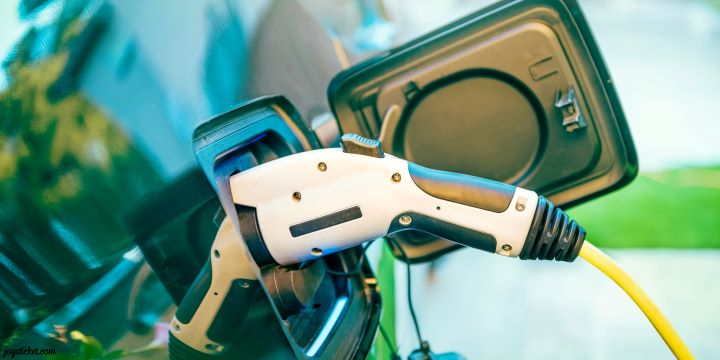Going Green On A Budget: Affordable Home EV Charging Solutions
Table of Contents
- Introduction to EV Charging
- Importance of Home EV Chargers
- Budget-Friendly EV Charging Options
- Cost-Saving Tips for EV Charging
- Choosing the Right EV Charger
- Government Incentives and Rebates
- Future of Affordable EV Charging
- Conclusion
Introduction to EV Charging
As electric vehicles (EVs) become increasingly popular, understanding the fundamentals of EV charging is essential for both current and prospective owners. EV charging involves replenishing the battery of an electric vehicle by connecting it to an external power source. There are different levels of charging, each varying in speed and convenience. Level 1 chargers use a standard household outlet and provide a slower charge, suitable for overnight replenishment.
Typically located in residences and public charging spots, Level 2 chargers provide quicker charging speeds, making them perfect for everyday use. DC fast chargers are available for those needing rapid recharging, significantly reducing the time required to reach a full charge.
Integrating effective EV charging solutions is critical for adopting electric vehicles. These solutions include installing home charging stations, expanding public charging infrastructure, and developing innovative charging technologies. Home charging stations provide the convenience of overnight charging, while public infrastructure ensures EV drivers access charging points during longer trips. Innovative charging technologies optimize energy use by scheduling charging times when electricity demand is low, reducing costs and strain on the grid. Addressing these aspects facilitates a seamless transition to electric mobility, making it more accessible and practical for everyday use.
Importance of Home EV Chargers
A convenient and reliable home charging station is crucial for EV owners. Besides the obvious benefit of avoiding trips to public charging stations, home EV chargers can save you money in the long run. According to a recent study, home charging is typically cheaper per kilowatt-hour than that of public charging stations. This means that equipping your home with an EV charger is a matter of convenience and a more cost-efficient way to manage your vehicle’s energy consumption.
Additionally, home chargers enable more efficient time organization.
Rather than waiting at a public charging station, you can charge your car overnight and wake up to a fully charged battery. This benefit is particularly important for individuals with hectic schedules or residing in regions with limited public charging stations.
Budget-Friendly EV Charging Options
The market is flooded with various home EV chargers, but it’s possible to find affordable options that meet your needs. Level 1 chargers, which use a standard household outlet, are the most cost-effective. They can take longer to charge your vehicle fully but are perfect for overnight charging. These chargers typically come with the car, so there’s no additional cost involved.
If you’re looking for faster charging without a hefty price tag, consider a Level 2 charger requiring a 240-volt outlet. Level 2 chargers are widely regarded for their efficiency and affordability. They can charge an EV in a fraction of the time compared to Level 1 chargers, making them a more viable option for heavy users or those who need quick turnarounds.
Additionally, if you’re on a tight budget, it’s worth exploring second-hand or refurbished chargers. While ensuring they meet safety standards is crucial, these can be a great way to save money without sacrificing functionality.
Cost-Saving Tips for EV Charging
Saving on EV charging doesn’t just stop at the purchase of a charger. Here are some tips to further reduce costs:
- Time-of-Use Rates: Some utility companies offer lower electricity rates during off-peak hours. Charging your EV overnight can be an intelligent way to reduce your electricity bill. Consult with your local utility provider to determine if such rates are available and how to use them.
- Intelligent Chargers: Invest in a smart EV charger to schedule charging times. This ensures you’re charging during the most economical periods. Some intelligent chargers even have apps that notify you when the rates are lowest, optimizing your electricity usage.
- Energy-Saving Modes: Optimize your EV settings to use less power for activities like heating or air conditioning while driving. Many modern EVs come with eco-driving modes that can substantially reduce energy consumption.
Adopting these practices can significantly lower your electricity bills and make EV ownership even more affordable.
Choosing the Right EV Charger
Selecting a suitable charger involves considering your driving habits, vehicle model, and home infrastructure. For instance, a Level 2 charger may be ideal if you drive long distances daily despite the initial higher cost. On the other hand, a Level 1 charger might be sufficient for low-mileage users. Before deciding, confirming that your house’s electrical panel can accommodate the extra load is essential.
Seek the expertise of an electrician to evaluate your home’s electrical capabilities and implement any required enhancements. This upfront investment can prevent potential issues down the line and ensure that your charging setup is safe and efficient.
Government Incentives and Rebates
Many governments offer incentives to make the transition to electric vehicles more affordable. From federal tax credits to state-specific rebates, plenty of programs are designed to ease the financial burden. An example is the range of incentives the U.S. Department of Energy offers for installing home charging stations. Utilizing these programs can significantly decrease the initial expenses you incur. Some local utility companies also offer rebates or lower rates for customers who install home EV chargers. Check with state and local agencies to see what financial assistance is available in your area. These incentives not only reduce the initial costs but can also make the long-term upkeep of your EV more economical.
Future of Affordable EV Charging
With ongoing technological advancements, there is a promising future ahead for cost-effective EV charging options. Innovations in solar-powered chargers and two-way charging technology, enabling your vehicle to power your house, are quickly approaching. These advancements are anticipated to lower costs and improve the practicality and convenience of owning an electric car.
Additionally, upcoming improvements in battery technology could make future EVs even more efficient, thus lowering the overall cost of ownership. As batteries become more capable and cheaper to produce, the upfront costs of EVs and their associated charging infrastructure are expected to decrease.
With continuous advancements and governmental support, the dream of affordable and widespread EV adoption is closer to becoming a reality.
Conclusion
It is possible to be environmentally friendly without spending a lot of money. By utilizing appropriate home EV charging options and some forethought, you can experience the advantages of owning an electric vehicle without spending too much. Various methods are available to ensure that EV charging is cost-effective, from selecting the correct charger to taking advantage of government incentives. Embrace moving towards a sustainable future, one charge at a time.














